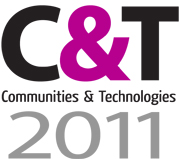Bluetracker
Abstract
Bluetracker is an application that continuously scans for nearby Bluetooth devices such as mobile phones or laptops. Every time a device is detected, the time stamped data is stored in a database. Over time, a dataset of which devices moved in and out of the location and at what times is accumulated.
In phase one of this project, the bluetracker application is installed to monitor the Bluetooth activity within a specified location. It runs for about 2-4 weeks to establish a control dataset. In addition, a camera takes time stamped still images at regular intervals, e.g., once a minute. The images are then analyzed to count the number of people within that location. By overlaying this data with the time stamped Bluetooth data, a rough guide as to what percentage of people carry a Bluetooth enabled device (set to discoverable) will emerge.
In phase two, the detected Bluetooth devices are going to be represented in real-time as fish in a virtual aquarium (similar to an aquarium screensaver) on a public display that is visible to the owners of the devices. The Bluetooth name is displayed underneath each fish. As a new Bluetooth device is detected, a new fish appears on the screen, and respectively, once a Bluetooth device isn’t detected anymore, the representing fish disappears. Using the Bluetracker application, the real-time Bluetooth sensing is being made publicly visible.
By analyzing and comparing the datasets of phase one and phase two, it will help to investigate the following questions:
- Do users tend to change their possibly non-anonymous Bluetooth name to a more anonymous name?
- Do users tend to turn their Bluetooth device on or off because of the public visibility?
- Do participants “play” or interact with the application once they figured out how it works, e.g., do they use it to send each other messages through their Bluetooth names?
In addition to the log data, a qualitative study comprising covert observations followed by interviews with the users will provide clues with regards to the participants’ attitude towards public monitoring/sensing systems, public visibility and public digital representations. Those attitudes might have critical impact on the future designs of mobile phone/public screen interaction systems, which will be developed as part of this project.

Team
- Ronald Schroeter (PhD Candidate)
- Assoc. Prof. Marcus Foth (Principal Supervisor)
- Prof. Paul Roe (Associate Supervisor)
- Dr Christine Satchell (Associate Supervisor)
- Greg T Young (Graphic Designer)
Publications
Young, G. T., Foth, M., & Matthes, N. Y. (2007, Nov 28-30). Virtual Fish: Visual Evidence of Connectivity in a Master-Planned Urban Community. In B. Thomas & M. Billinghurst (Eds.), Proceedings OZCHI 2007 (pp. 219-222). Adelaide, SA: University of South Australia. (eprints >)


